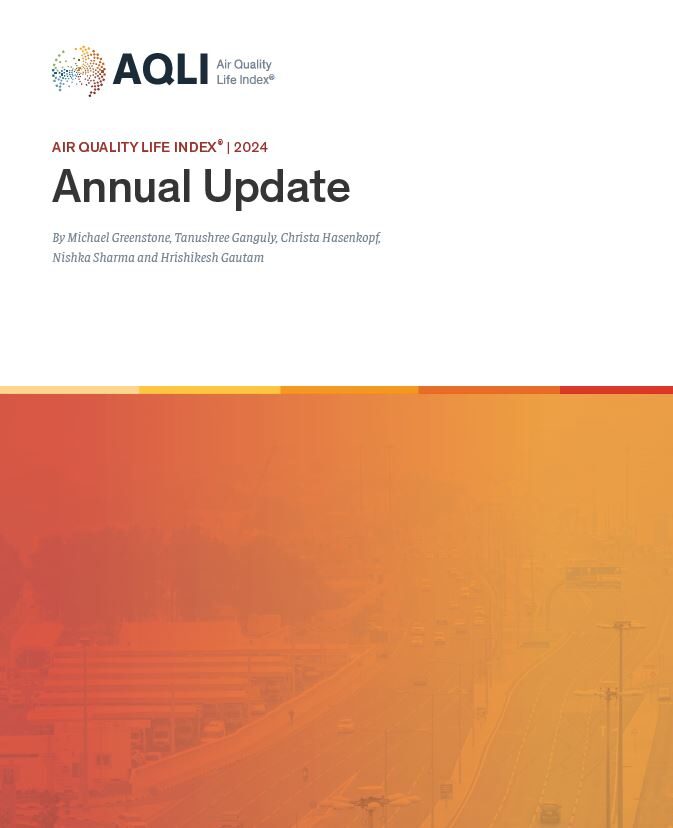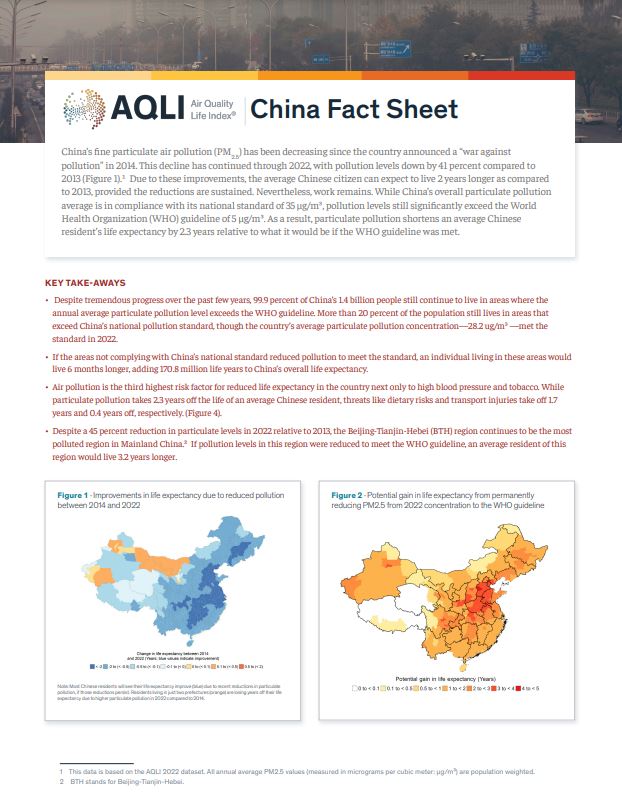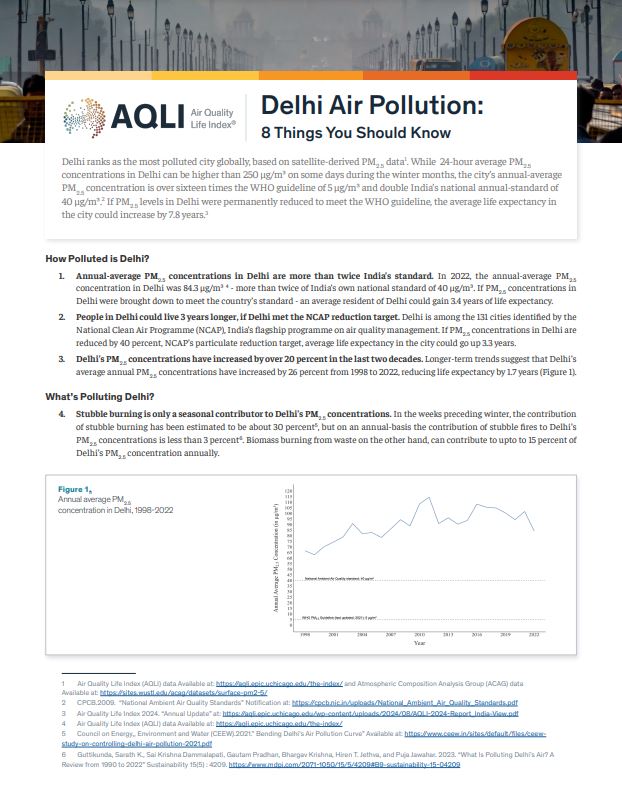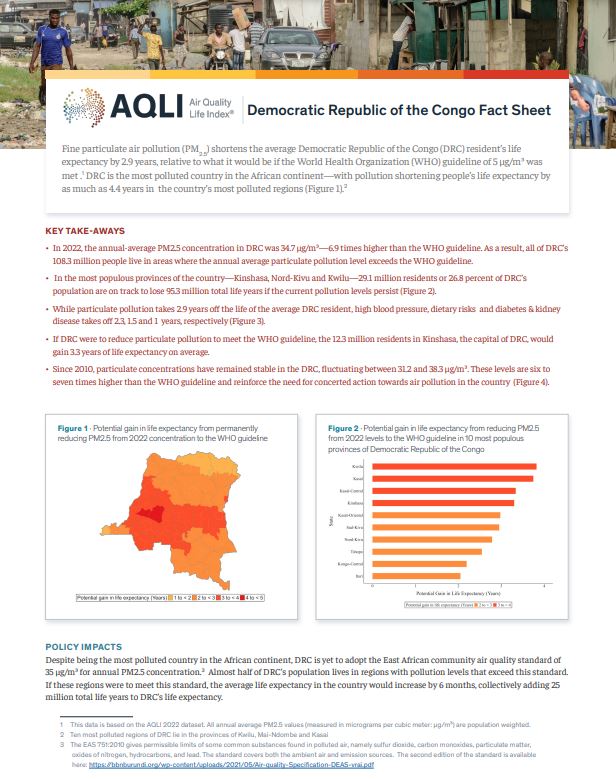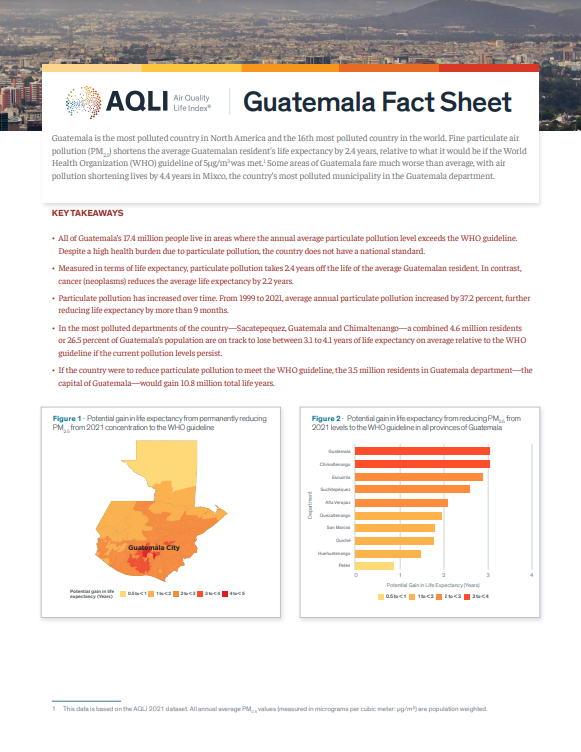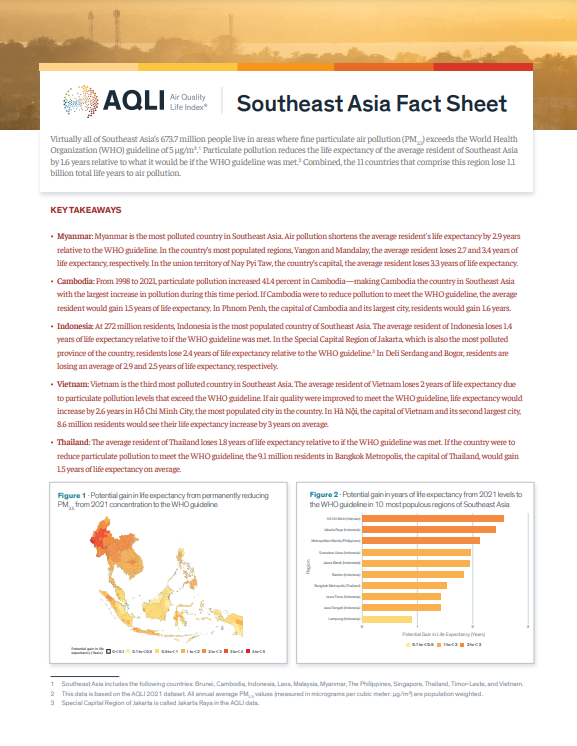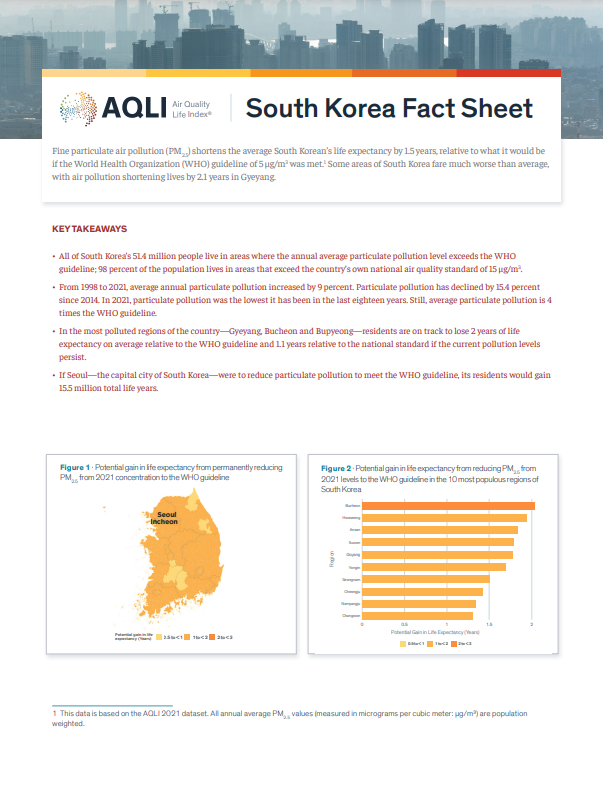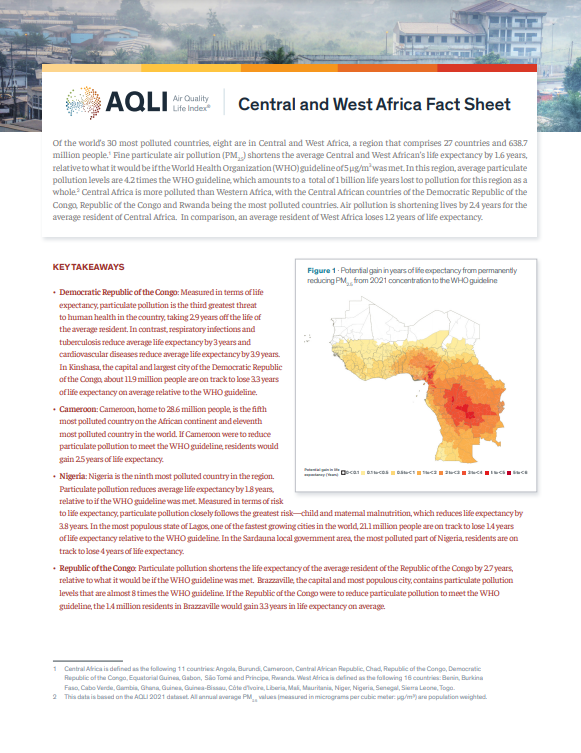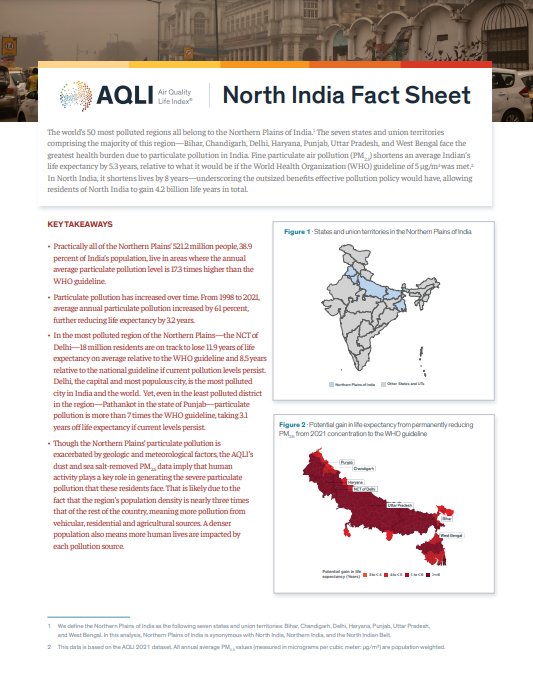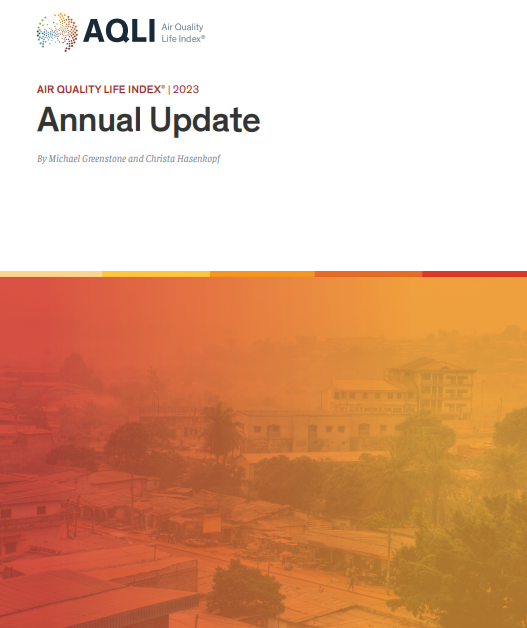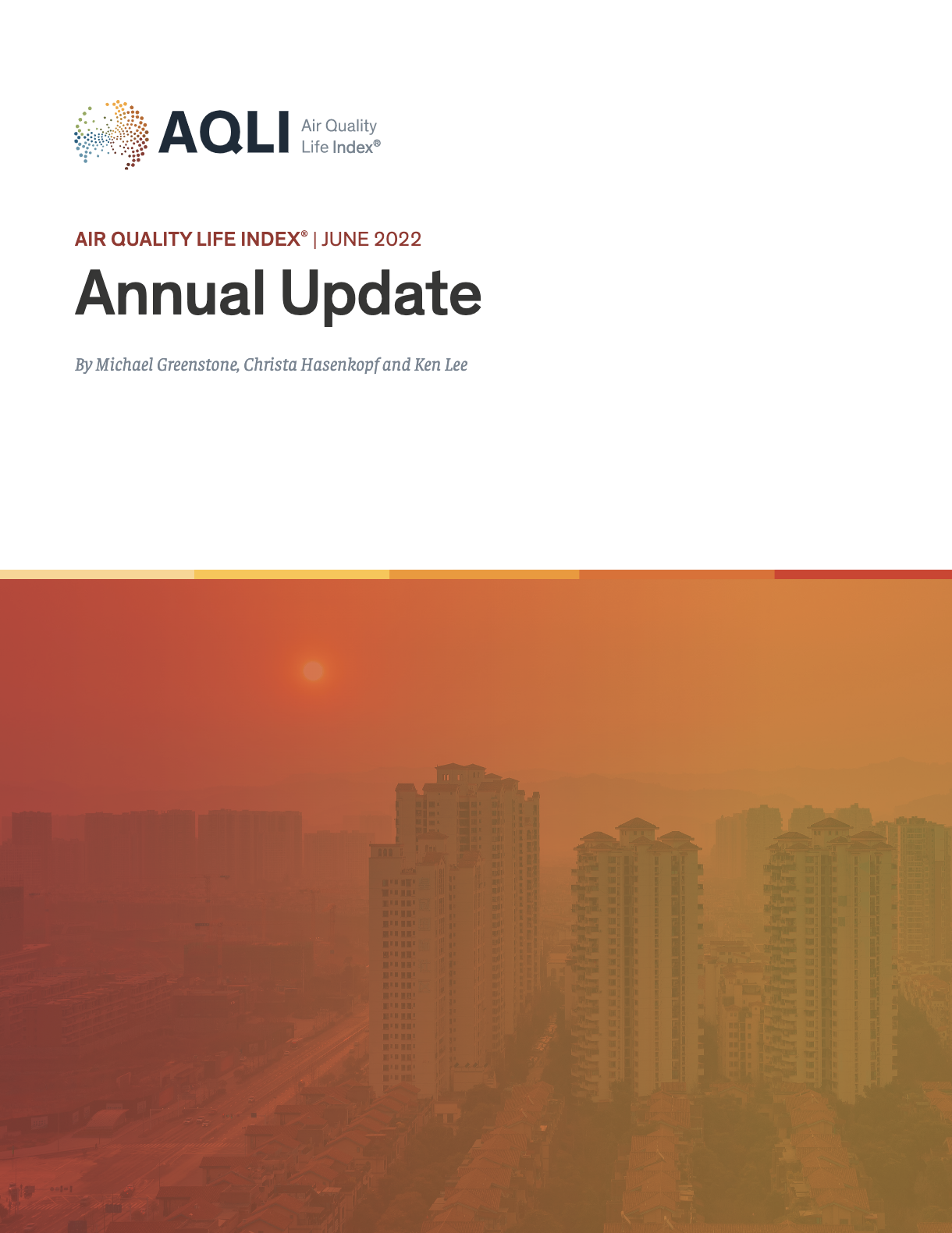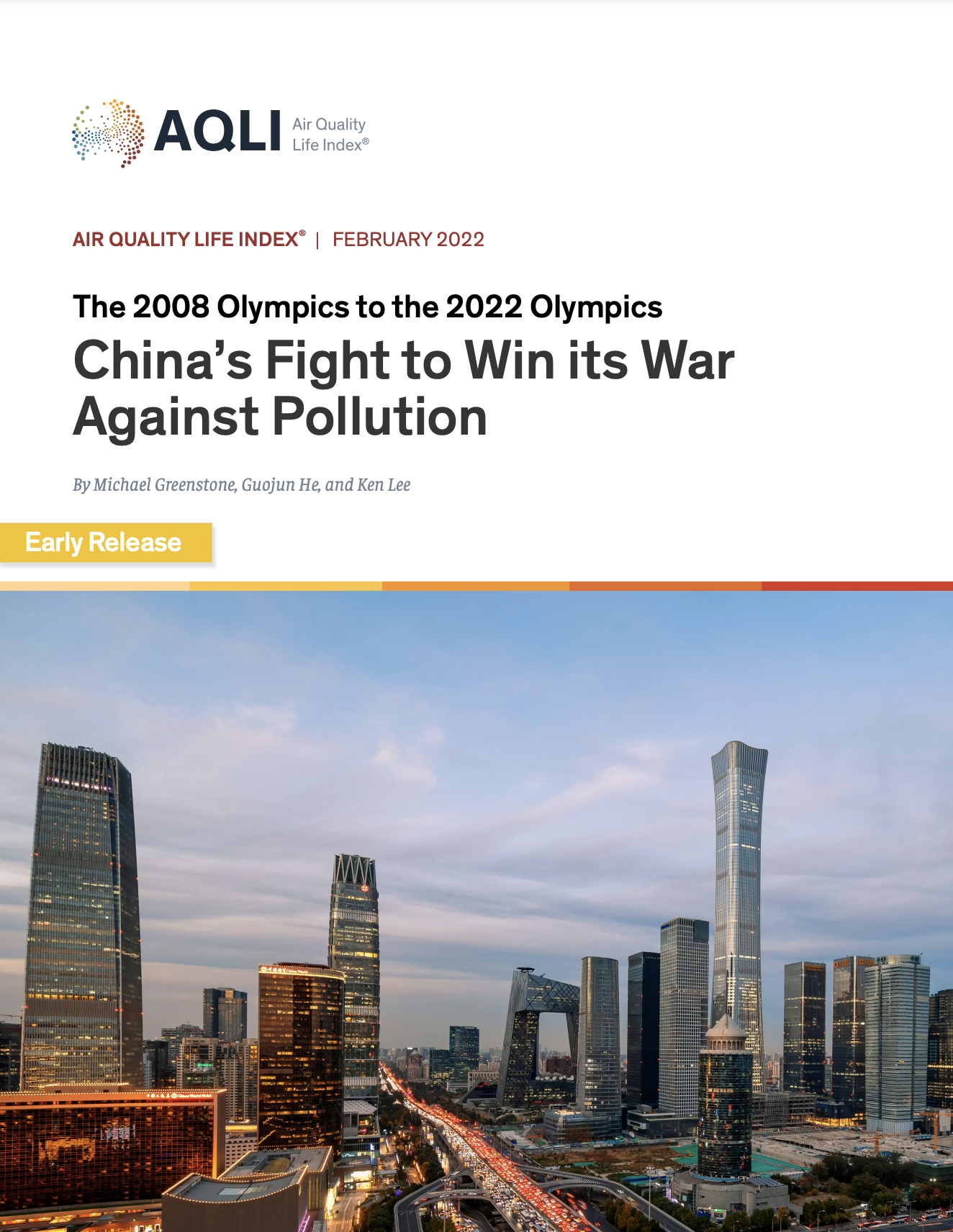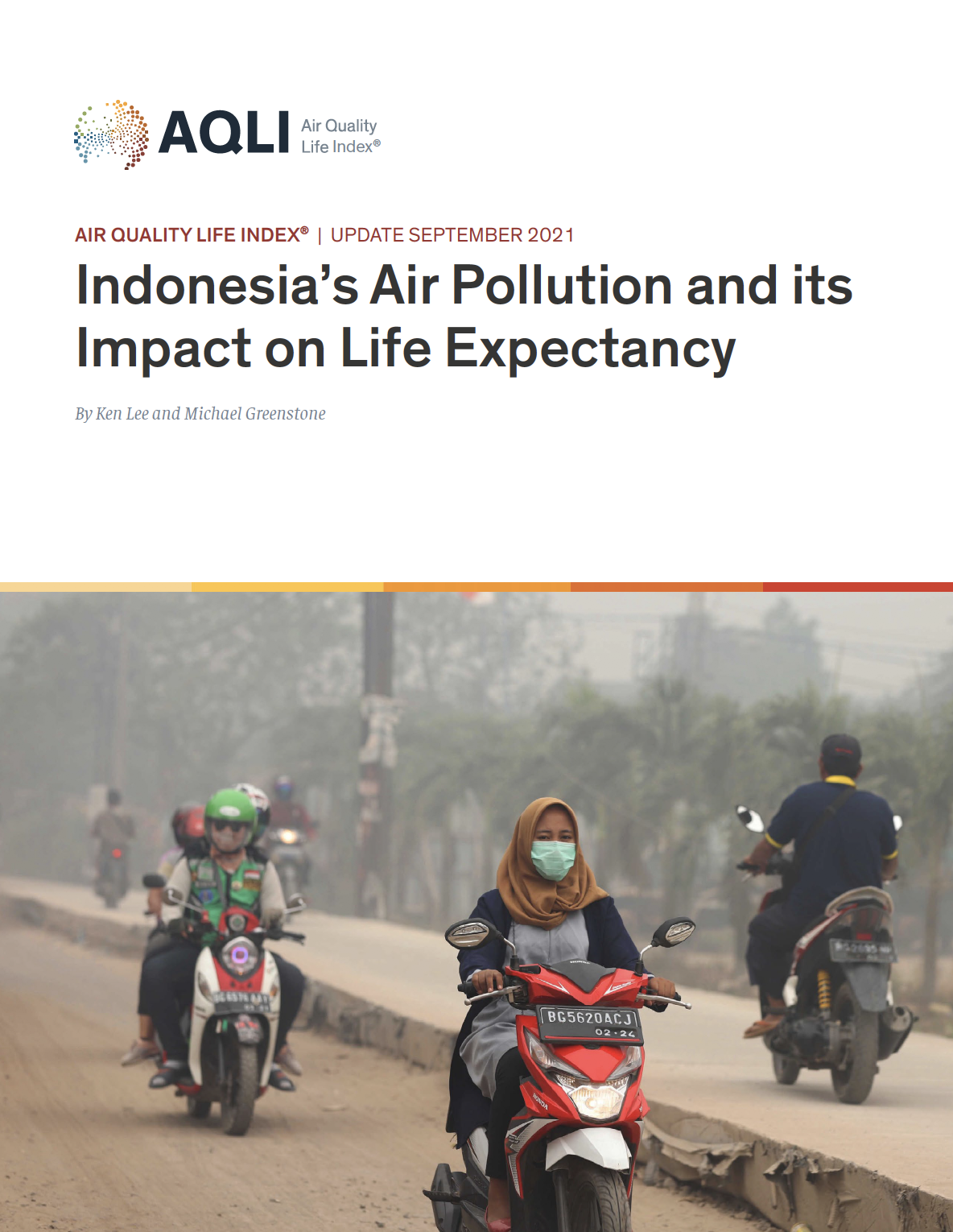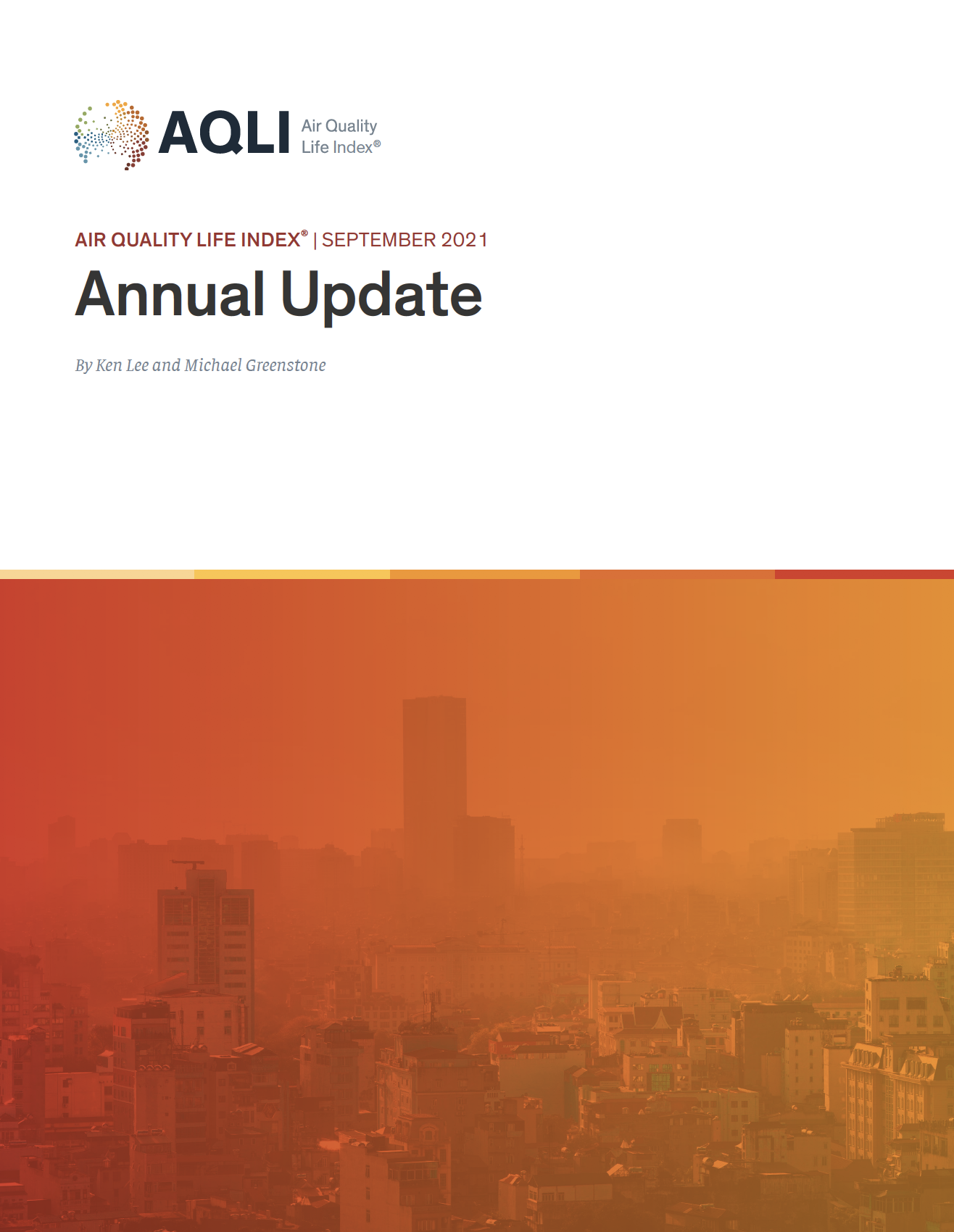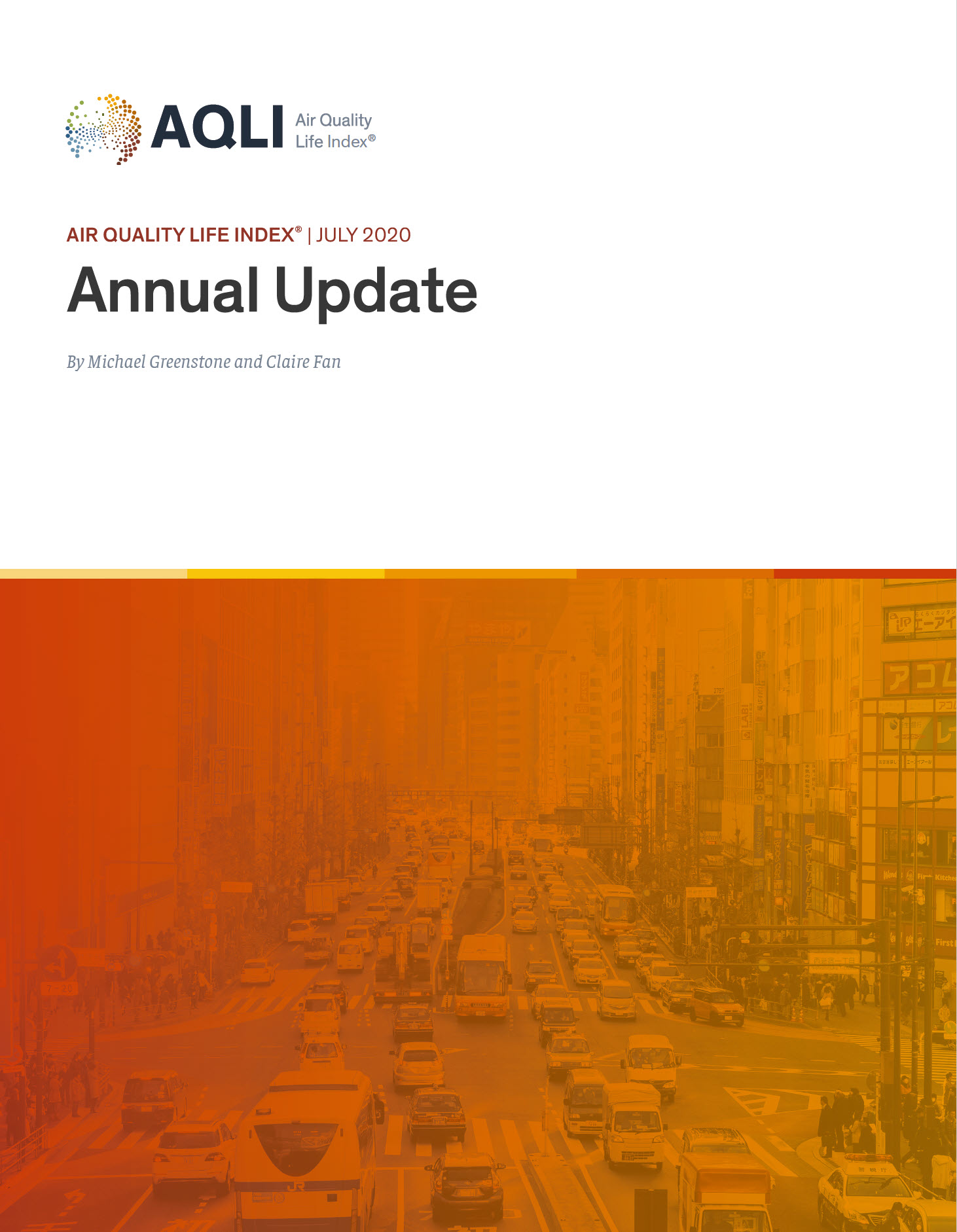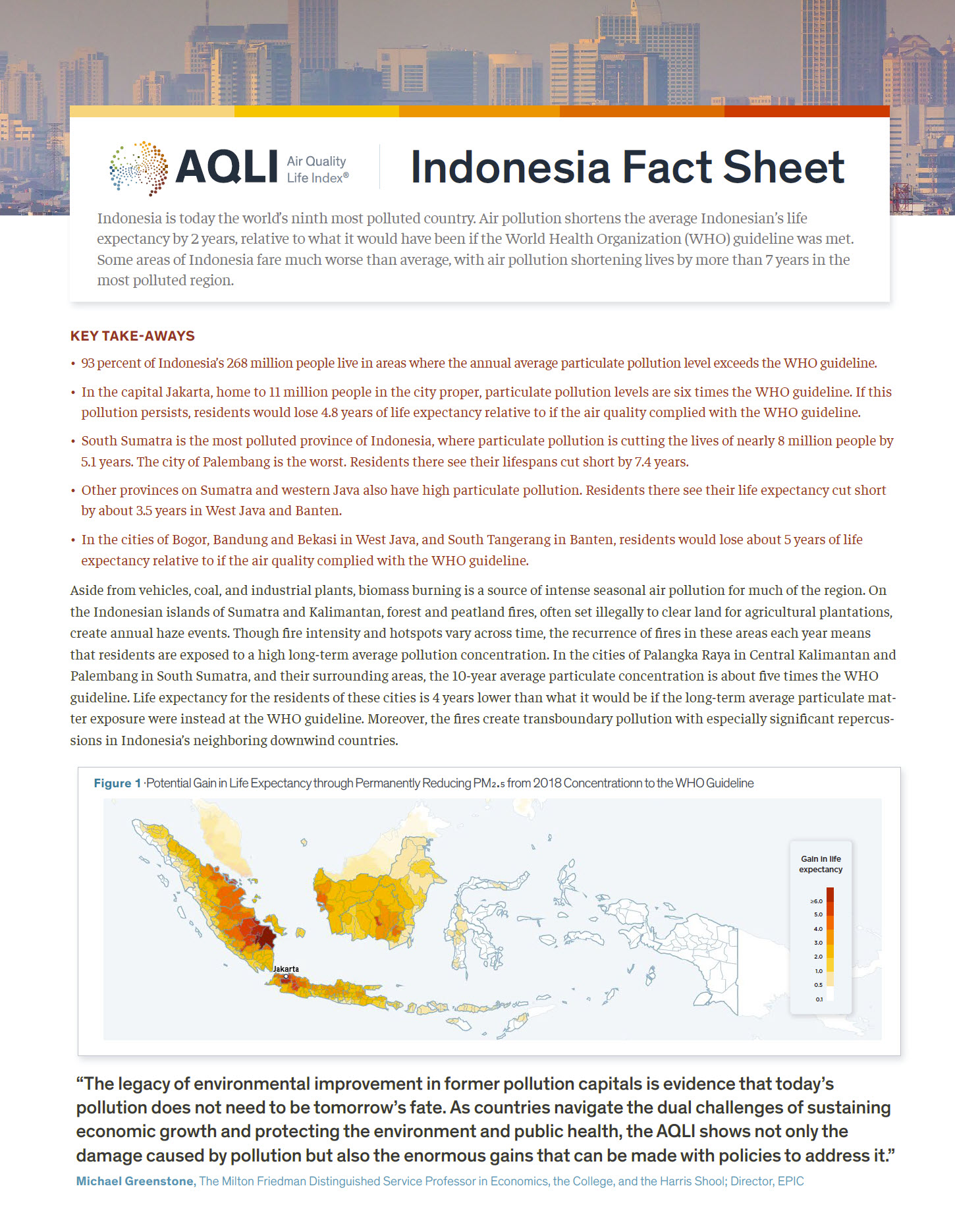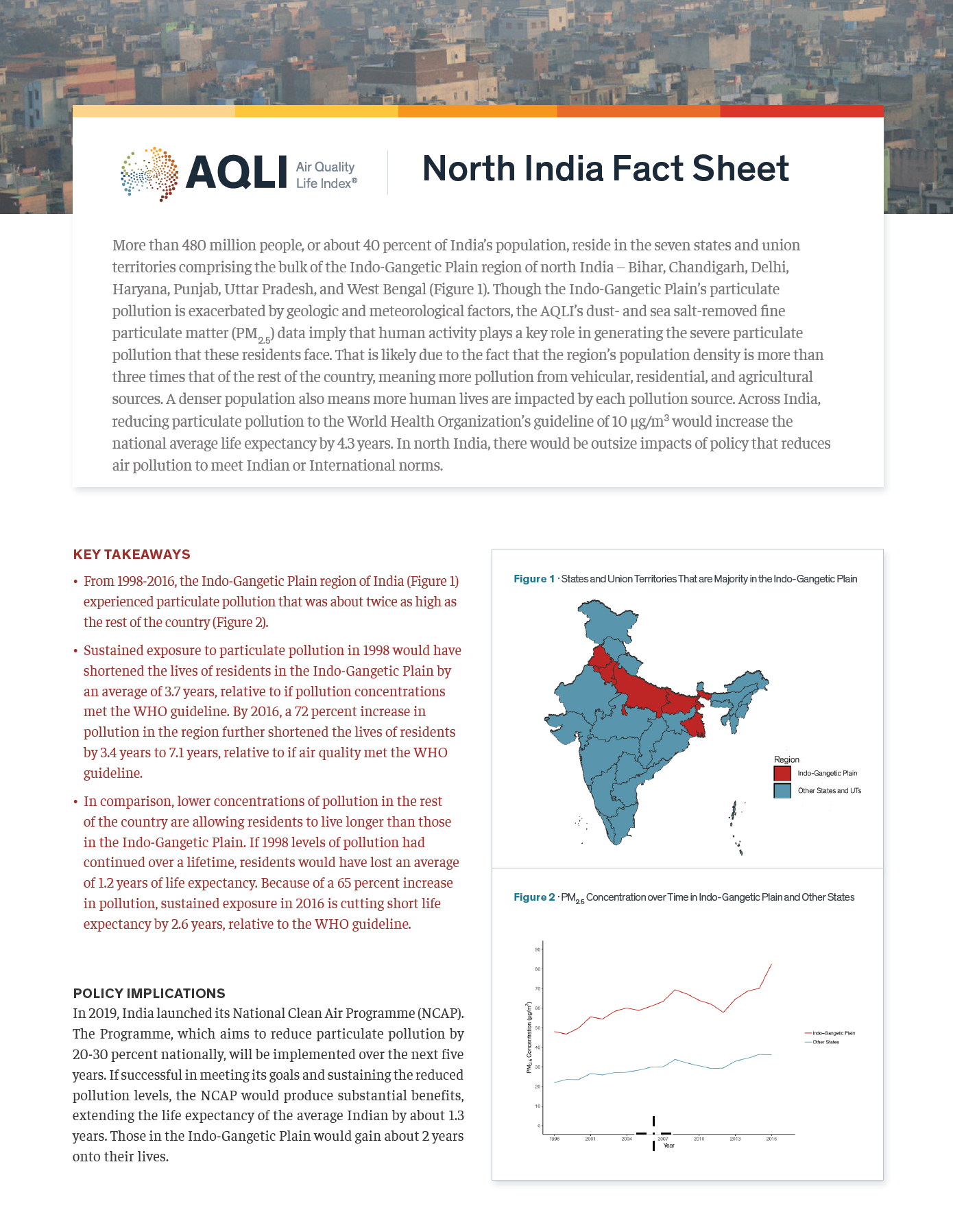• August 2024
Annual Update
By Michael Greenstone, Tanushree Ganguly, Christa Hasenkopf, Nishka Sharma and Hrishikesh Gautam
Air pollution is the greatest external threat to human life expectancy on the planet. The AQLI’s latest 2022 data reveals that permanently reducing global PM2.5 air pollution to meet the World Health Organization (WHO) guideline would add 1.9 years onto average human life expectancy—or a combined 14.9 billion life years saved. The impact of PM2.5 on global life expectancy is comparable to that of smoking, more than 4 times that of high alcohol use, more than 5 times that of transport injuries like car crashes, and more than 6 times that of HIV/AIDS.









